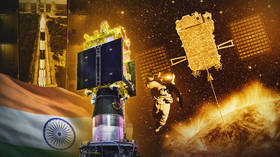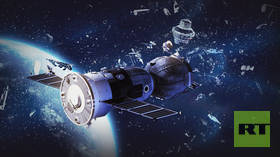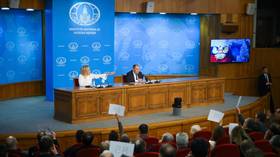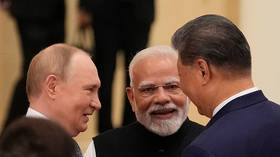Icy Awakening: India fails to wake up its lunar mission from a long sleep in -200C°. What’s next?
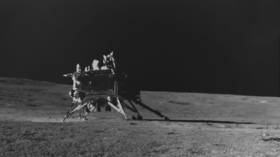
It’s World Space Week, but Indian space scientists want to forget it ASAP.
The reason? Their last hopes of rousing Chandrayaan-3’s Vikram lander and its rover Pragyan, which landed on the Moon’s south pole in late August, withered just as the Sun set over the Moon at the end of a lunar day (equal to 14 Earth days) on October 5.
The Indian Space Research Organization’s (ISRO) official website continued with an old news flash – ‘Chandrayaan-3: Efforts to establish communication with the lander and rover continue’ – but the stoic silence across the agency’s facilities deepened the gloom. Sources at the ISRO say there is no intended announcement about the mission’s end.
Their efforts to rev up the lander and rover commenced on September 22, the beginning of a lunar day, but were ultimately in vain. The instruments onboard the lander and rover did not respond to commands though the onboard batteries were fully charged and the solar panels were pointed at the Sun.
Evidently, they had ceased functioning because of freezing nights, with temperatures as low as -200C° at the Moon’s south pole. The frequency-dependent sensors onboard were impacted the most by the icy conditions, resulting in a loss of communication, sources in the ISRO explained.
Had the scientists succeeded in awakening the lander and rover, the feat would have signaled a mastery over state-of-the-art technologies involved in bringing such probes back to life in extreme weather conditions and hostile environments.
For now, the list of achievements include the know-how for a smooth descent and soft landing; the ability to lift off and return to lunar soil (a short hop was carried out, with Vikram climbing 16 inches and touching down again at a new point 12-16 inches away from where it originally landed); a confirmation of the presence of sulphur, calcium, iron, aluminum, and titanium; detection of a possible lunar quake on August 26, and installation of a retro reflector, an instrument similar to the one placed by NASA astronauts during an Apollo mission in the 1970s.
The lander, Vikram, touched down on August 23 and Pragyan, the rover, rolled down the ramp a day later for a stroll on lunar soil until September 4. With the landing, India joined an exclusive group of nations – the US, the erstwhile Soviet Union, and China. The landing occurred a couple of days after the crash of Russia’s Luna-25.
Some ISRO scientists, speaking on condition of anonymity, wondered why their organization attempted wakeup commands from September 22 despite knowing the impact of such extreme weather conditions on the lander. Some scientists believe that ISRO could have declared the mission a success on September 4 itself.
Even ISRO chief Sreedhara Panicker Somanath declared, “India is on the Moon,” and said afterwards that the soft landing was the hardest challenge. He admitted at the time that re-establishing contact with Pragyan and Vikram was “a possibility, but there’s no certainty.”
Around 1.4 billion Indians erupted with joy the day Vikram touched down on an undiscovered part of the Moon without any hiccups. Prime Minister Narendra Modi named Vikram’s landing spot the Shiv Shakti Point, and designated the date of the landing, August 23, as National Space Day.
Chandrayaan-3, the spacecraft that launched the lander and the rover onto the Moon’s surface, continues to circle the Moon just like its predecessor, Chandrayaan-2, had originally been planned as an ISRO-NASA endeavor with the capability of returning to Earth with soil samples.
The Jet Propulsion Laboratory (JPL) in California had agreed to team up with ISRO, and to share the lunar soil equally for extensive research. While JPL had proposed christening the project ‘Moonrise’, ISRO was keen to retain it as part of the Chandrayaan series. The proposed joint effort, however, fell through as the Indian government failed to meet a deadline set by JPL-NASA for handing in an official letter of confirmation in 2009-10.
The next outing to the Moon, possibly in 2025-26, will perhaps be called Chandrayaan-4 and will be in collaboration with the Japanese Space Agency, JAXA. It will design the rover, while the ISRO will not only roll out the lander but launch the probe using an Indian rocket. The mission is likely to be called the Lunar Polar Exploration Mission (LUPEX).
Dr. Mylswamy Annadurai, known as India’s ‘Moon Man’ for leading the first two outings (Chandrayaan-1 and 2), listed the presence on the ISRO’s retro reflector as one of the major achievements of the current mission.
“It’s not just 14 days (the life of Vikram and Pragyan), but 14 days and 100 years,” he said, explaining that the instrument will be active over the next century and help in providing data for an interesting study: A miniscule, yet gradual drift of the Moon away from the Earth.
“Scientists believe the Moon is moving a couple of centimeters away from the Earth every year because it is being tugged by the Sun. This instrument will help in measuring the drift,” the former director of the Rao Space Center in Bengaluru told RT.
He said the Indian space agency would also be able to improvise on its expertise on soft landing through a detailed study of the crucial 27-minute descent and touchdown witnessed on August 23.
